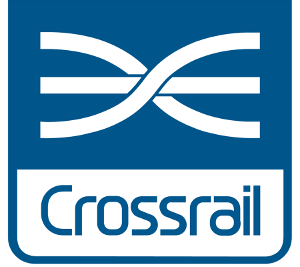Improving efficiency in a complex £15 billion construction project
The Crossrail project uses Esri’s ArcGIS to manage hundreds of simultaneous programmes of work and account for millions of new assets. The organisation has created a range of web, mobile and 3D GIS apps that help manage cost efficiency, ensure site safety and share information securely.
ArcGIS improves the productivity of Crossrail’s Asset Protection Engineers by up to 80%
The Challenge
The £15 billion pound Crossrail project is delivering a new railway for London and the South East of England. Europe’s largest infrastructure project, it encompasses 42km of tunnels and 10 new stations. The finished railway will be an accessible route of 40 stations from Reading and Heathrow in the west, through central London, to Shenfield and Abbey Wood in the east.
A project on this scale requires a geographic information system (GIS) to record and manage the ever-changing inventory of assets and many simultaneous programmes of work. Crossrail’s existing GIS needed to be updated to ensure it was fully compatible with modern browsers and operating systems. The proposed new solution also needed to be more time efficient and offer the cutting-edge capabilities needed.
The use of a temporal slider tool in ArcGIS helps to improve estates management
The Solution
Following a thorough competitive evaluation, Crossrail Ltd entered into an Enterprise Licence Agreement (ELA) with Esri UK. With support from Esri UK’s Professional Services team, it then used Esri’s ArcGIS to develop an integrated suite of server-based, desktop, web, mobile and 3D applications in 14 months. The organisation now uses:
- ArcGIS Desktop and ArcGIS Server to prepare data and perform spatial data analysis
- Portal for ArcGIS to make comprehensive, up-to-date information available to employees, designers and contractors via a secure intranet
- ArcGIS Mobile and ArcGIS Collector App to allow field-based personnel to see and correct the locations of assets, using mobile devices
- ArcGIS 3D capabilities to deliver three dimensional visualisations of facilities and their surroundings
- ArcGIS Online and Esri UK’s Open Data Portal to publish selected content for the general public, media and third parties
Crossrail also elected to use Esri UK’s Data Service, which streams Ordnance Survey background mapping and other contextual data directly into Crossrail’s corporate GIS. The use of this service has rapidly improved the quality of background mapping and reduced the need for time-consuming data management, saving several hundred hours of effort per annum.
An ArcGIS Mobile GIS solution helps to improve site security and public safety
The Benefits
ArcGIS has given Crossrail the flexibility to innovate and introduce valueadding GIS services over time. The first of its new solutions are already delivering benefits for the business, such as:
Increased employee productivity
Crossrail’s Asset Protection Engineers now use an ArcGIS-based app to help them produce ground movement reports in response to claims where settlement issues have potentially arisen. The engineer can use the app to select, collate and present all of the information required, resulting in up to 80% less time spent on the report.
Effective estate management
The responsibility for construction sites passes from one contractor to another in different project phases. By using a temporal slider tool in ArcGIS, employees within the organisation can easily see which contractors are responsible for which parcels of land at any one time. The solution therefore improves understanding of liability and reduces the risk of unauthorised occupation over a multitude of construction sites, avoiding unnecessary delays and cost overruns.
More cost efficient operations
In another initiative, Crossrail is using ArcGIS to model facilities in 3D for the first time and prepare an invaluable 3D asset record for the new station operators. The 3D capabilities of ArcGIS have enhanced the understanding of the relationships between assets and facility spaces, enabling them to be maintained more cost efficiently. Infrastructure Managers can also identify and analyse issues on the ground with greater understanding than before.
Improved safety and security
When Crossrail’s employees survey construction sites they use the ArcGIS Collector App on mobile tablets to check the exact boundaries against land records, and enter any observations or on-site variations. Crossrail can then ensure that hoardings are correctly placed to secure sites and help keep the public separate from the works taking place on site. The 3D mapping of stations may also prove critical in the future for helping the station operator.
Clear communication with external audiences
Using ArcGIS, Crossrail can easily share data about its routes, assets, tunnels and stations with third parties, the general public and the media. In the future, the organisation plans to make it possible for partners, such as Transport for London, to consume its data as web services or gain secure access to Crossrail’s central GIS portal. This approach will not only improve collaboration with partners; it is expected to also decrease the time that Crossrail spends managing content for third parties and reduce the risk of decisions being made on the basis of out-of-date information.



